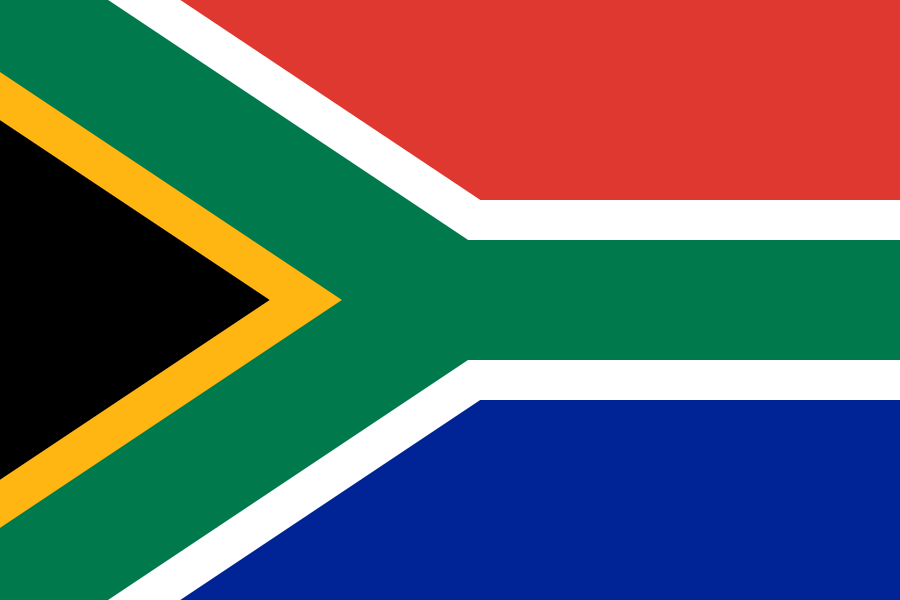Historical Context:
The current South African flag was officially adopted on April 27, 1994, coinciding with the country's first democratic elections. This momentous occasion marked the end of apartheid, a long-standing system of racial segregation and oppression that had been enforced in South Africa since 1948. The previous flag, used since 1928, was associated with the country's racially divisive past. In the pursuit of a new democratic and inclusive identity, the nation decided to replace the old flag with a symbol that would embody the ideals of unity and diversity.
Colors and Symbolism:
The South African flag comprises six distinct colors, each holding its own significant meaning:
- a. Red: The top horizontal band of the flag is adorned with a vibrant red color. Red traditionally symbolizes courage, strength, and the bloodshed endured during the struggle for freedom, democracy, and human rights in South Africa.
- b. Blue: The bottom horizontal band features a serene blue hue, representing the hope, optimism, and the vast potential for progress in the nation's future. Blue is also associated with the open skies and the surrounding oceans of the country.
- c. Green: The vertical band on the hoist side of the flag is decorated with a bold green color. Green symbolizes the lush and fertile land of South Africa, its natural beauty, and the importance of environmental preservation and agriculture.
- d. Black: The left arm of the Y-shaped band is marked by a deep black color. Black serves as a powerful reminder of the country's painful history, specifically the era of apartheid, racial injustice, and oppression that the South African people endured.
- e. Yellow (Gold): The right arm of the Y-shaped band boasts a radiant yellow or gold color. This hue represents the country's abundant mineral resources, with particular emphasis on gold, which has been a significant driver of the South African economy.
- f. White: The spaces between the colored bands and the center of the Y-shaped band are pure white. White symbolizes peace, harmony, and the potential for a united and reconciled nation moving forward.
Y-shape:
The most distinctive and prominent feature of the South African flag is the Y-shaped band, which emerges from the hoist side and extends towards the fly side, effectively merging two diagonally opposing corners. This Y-shaped design is deliberately balanced and positioned to create a sense of unity and convergence. It visually embodies the idea of diverse elements coming together as one, representing the unification of South Africa's various racial, cultural, and linguistic groups into a single nation.
Design Philosophy:
The design of the South African flag was the result of a nationwide competition that invited submissions from citizens across the country. Frederick Brownell, the then-State Herald of South Africa, combined elements from multiple entries to create the final design. This collaborative approach embodied the nation's collective aspiration for a united and inclusive South Africa.
Overall, the South African flag serves as a powerful symbol of hope, reconciliation, and the celebration of diversity. It encapsulates the country's journey from a dark history of apartheid to a bright future of democracy and unity. The flag stands as a constant reminder for all South Africans to embrace their differences, work together, and build a better tomorrow for themselves and their nation.
Last Updated on: August 02, 2023